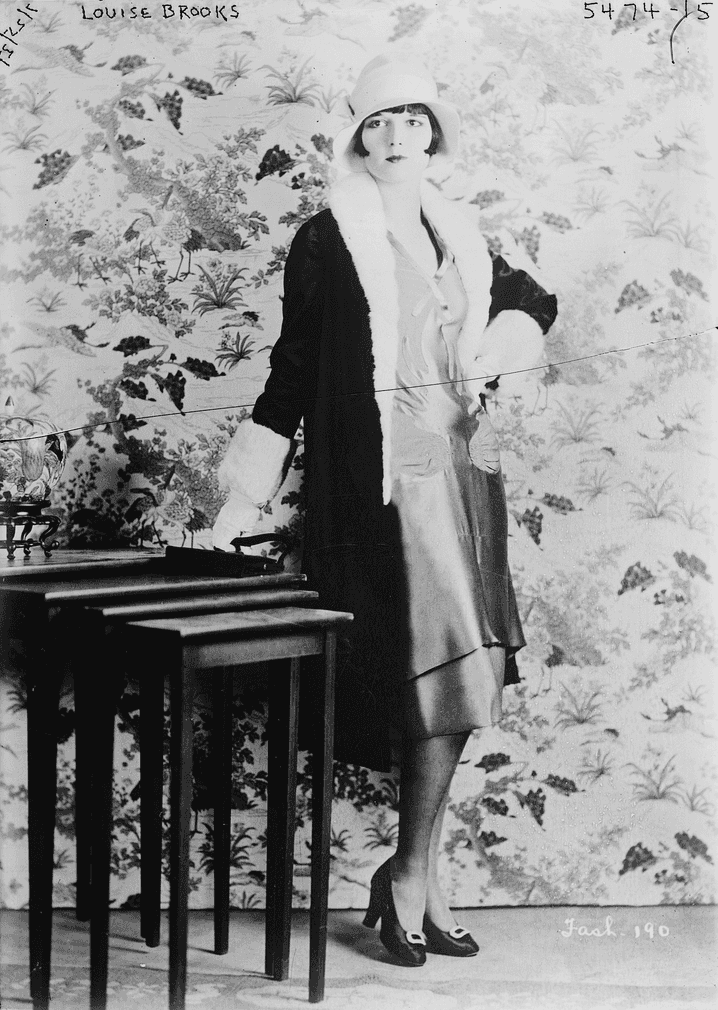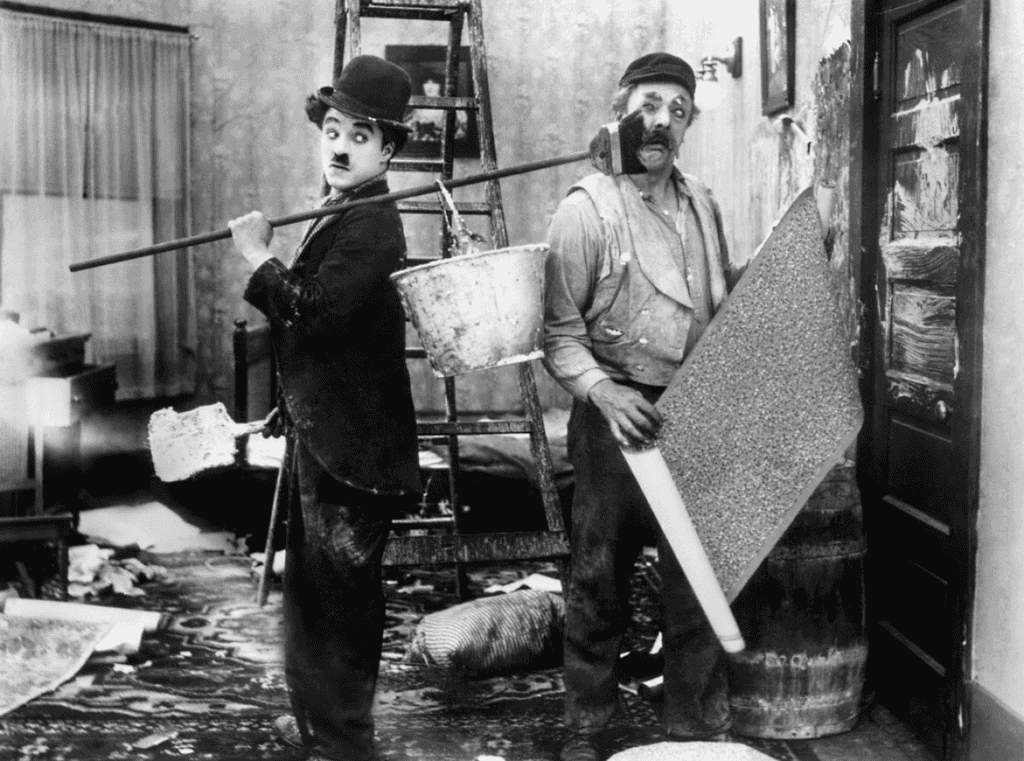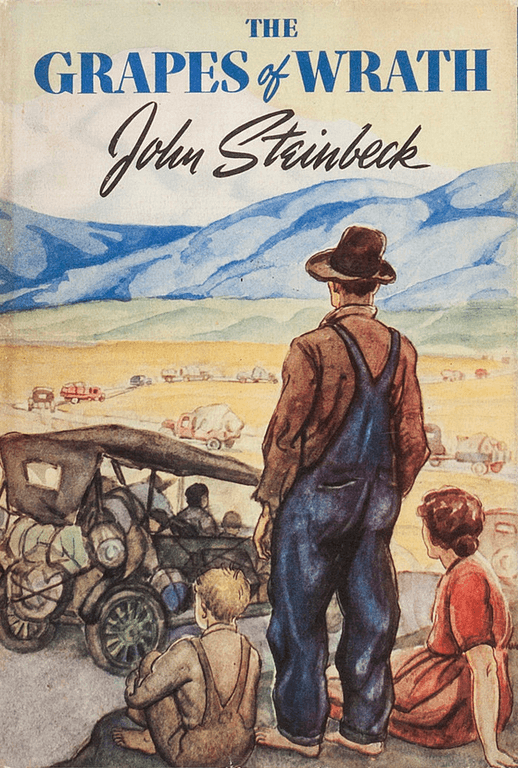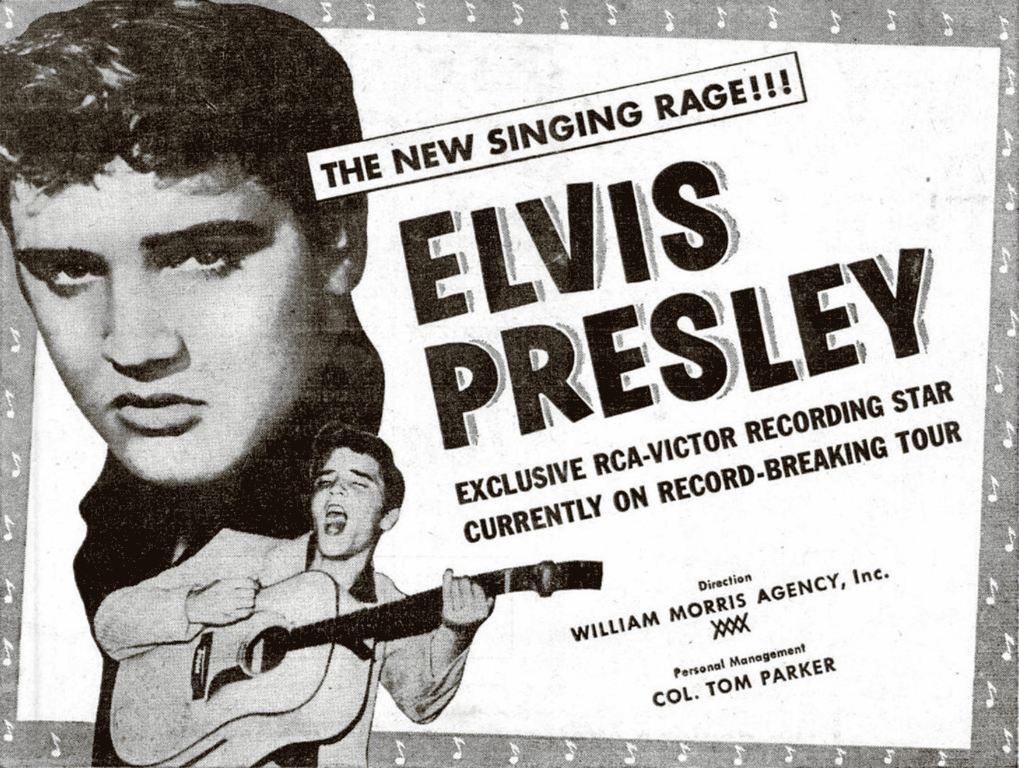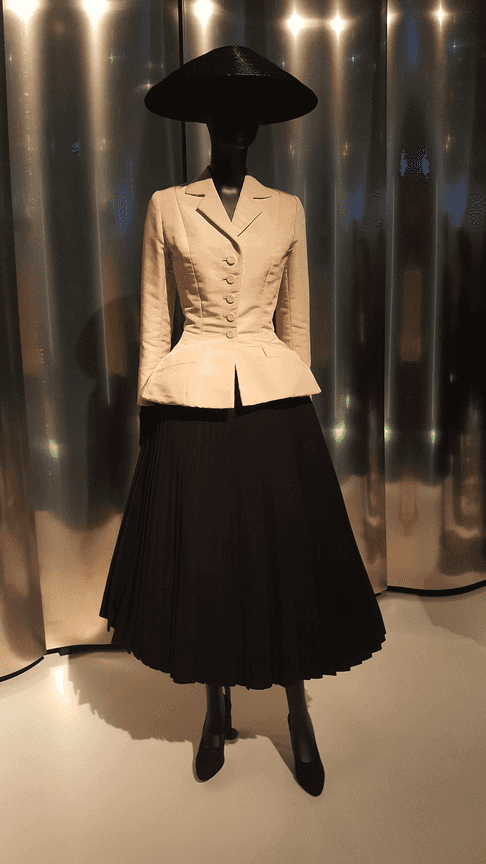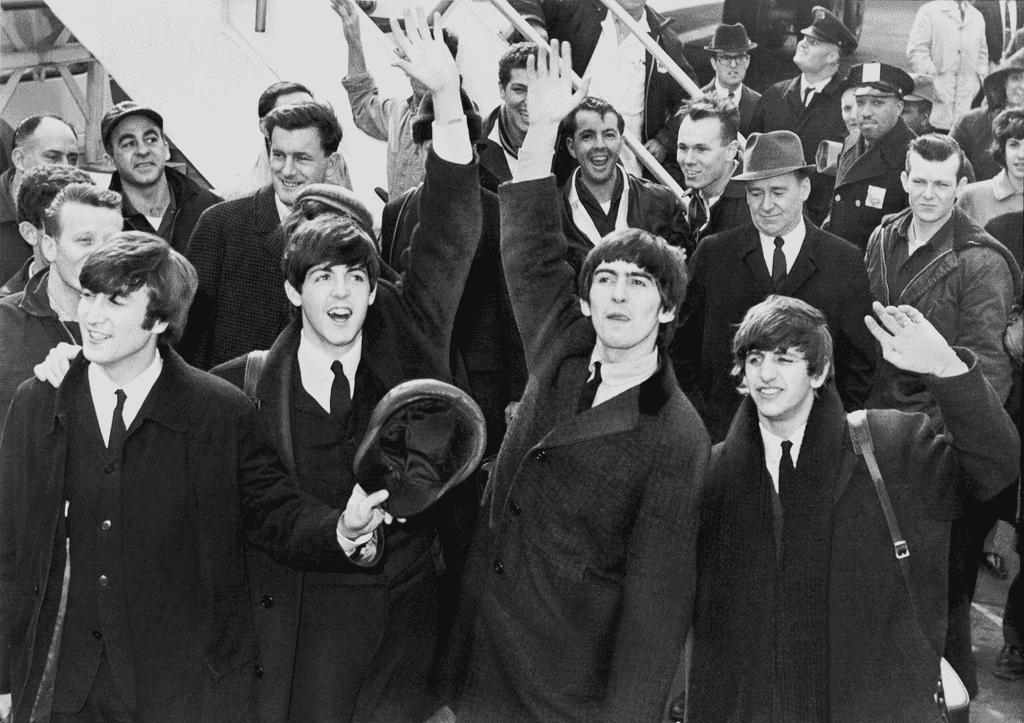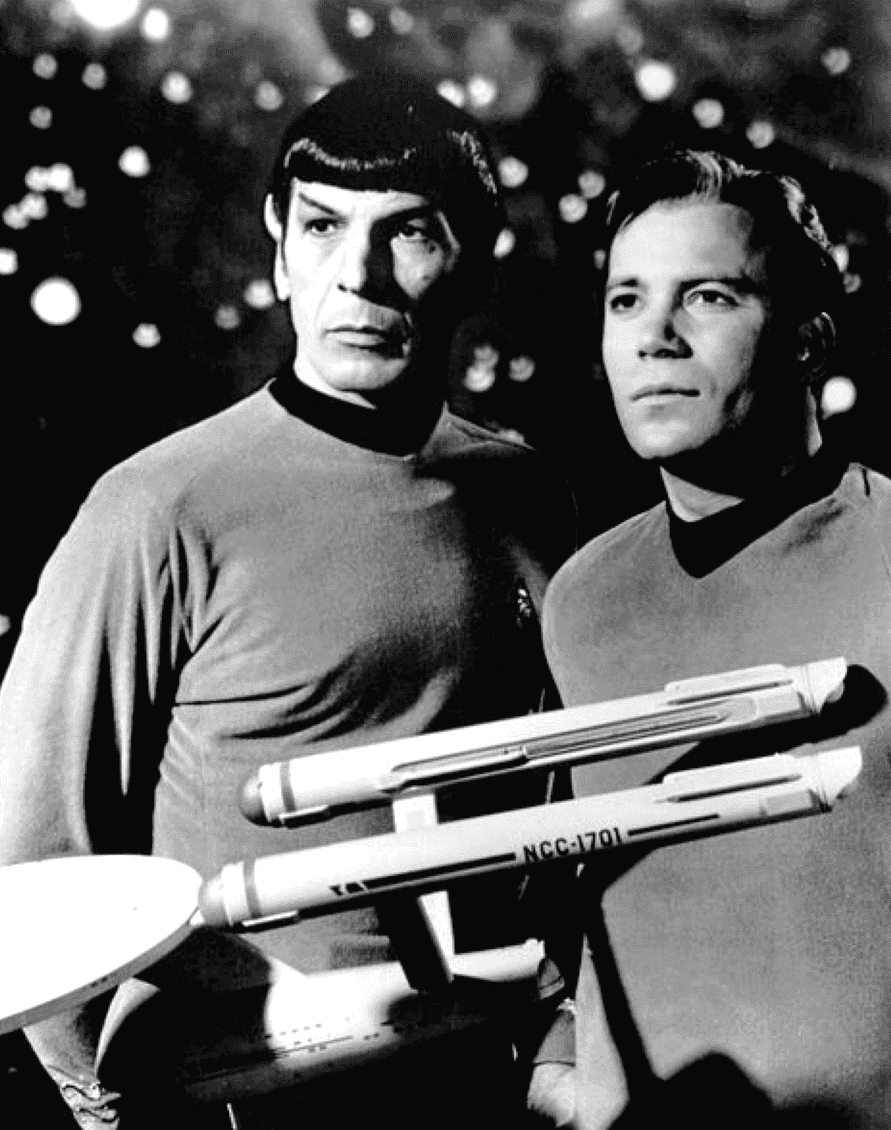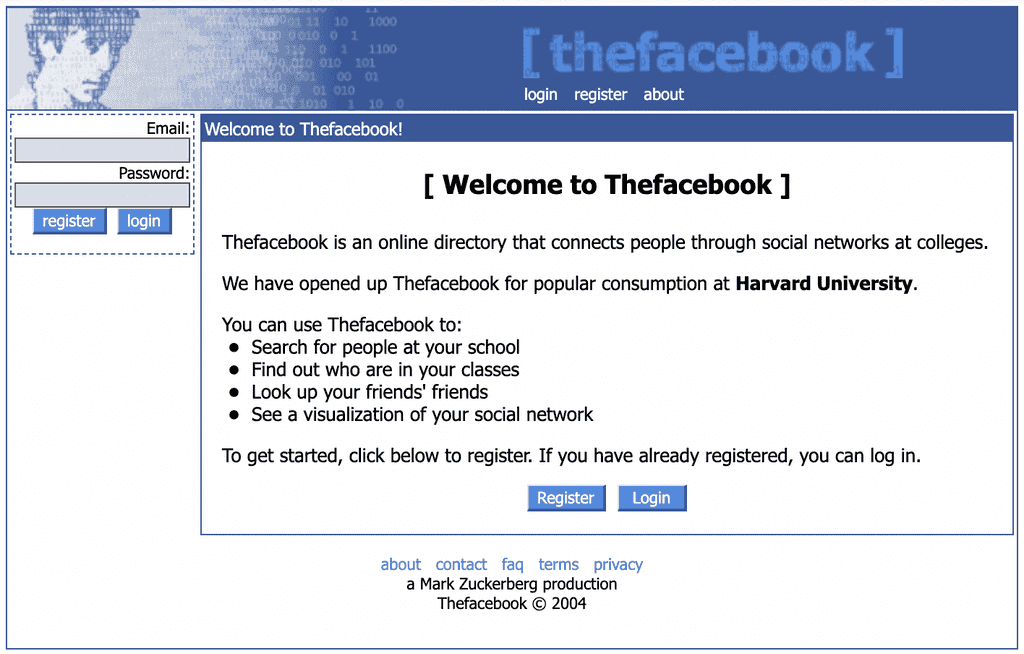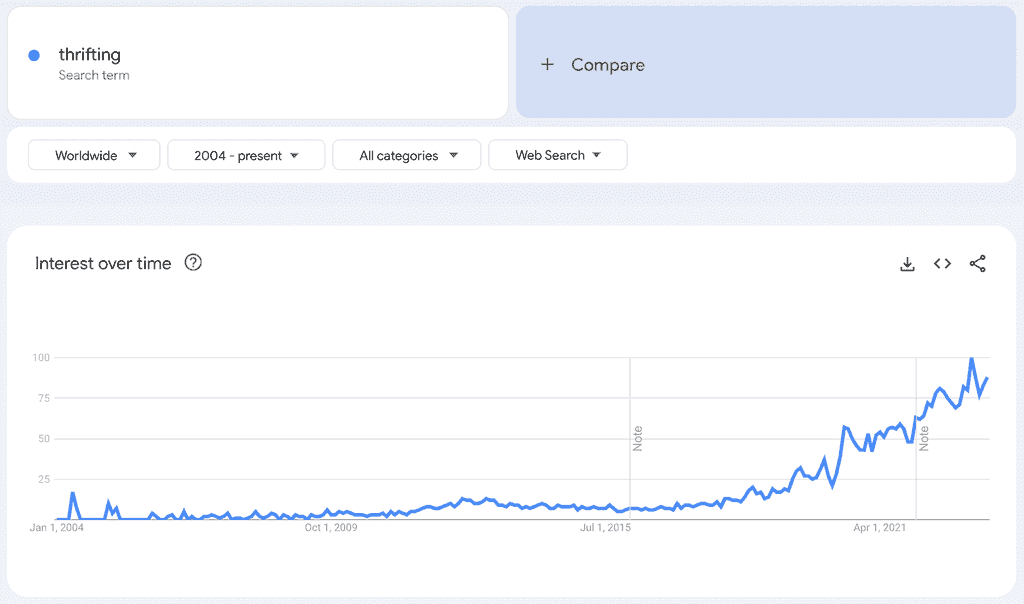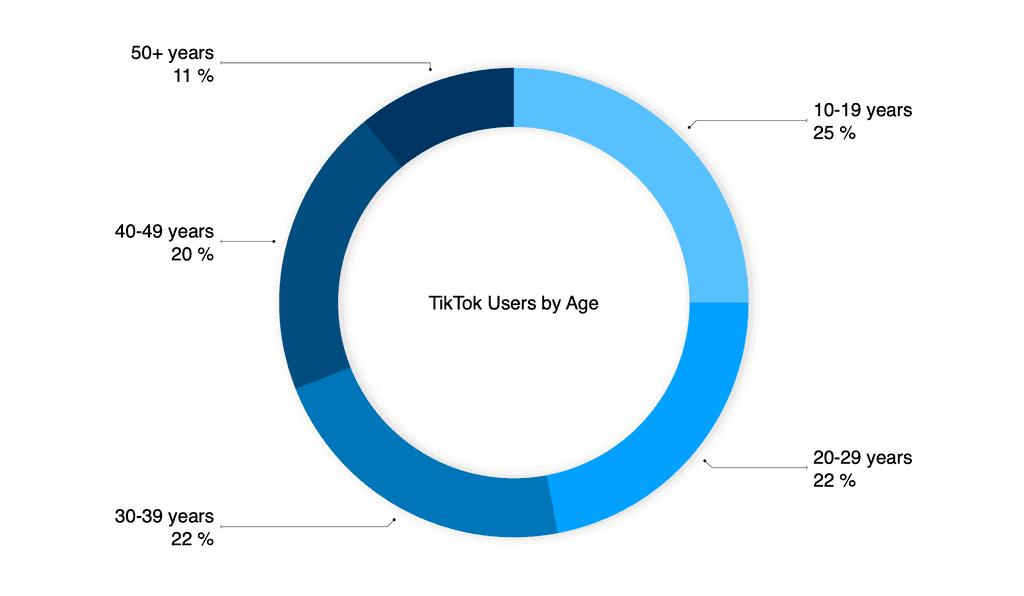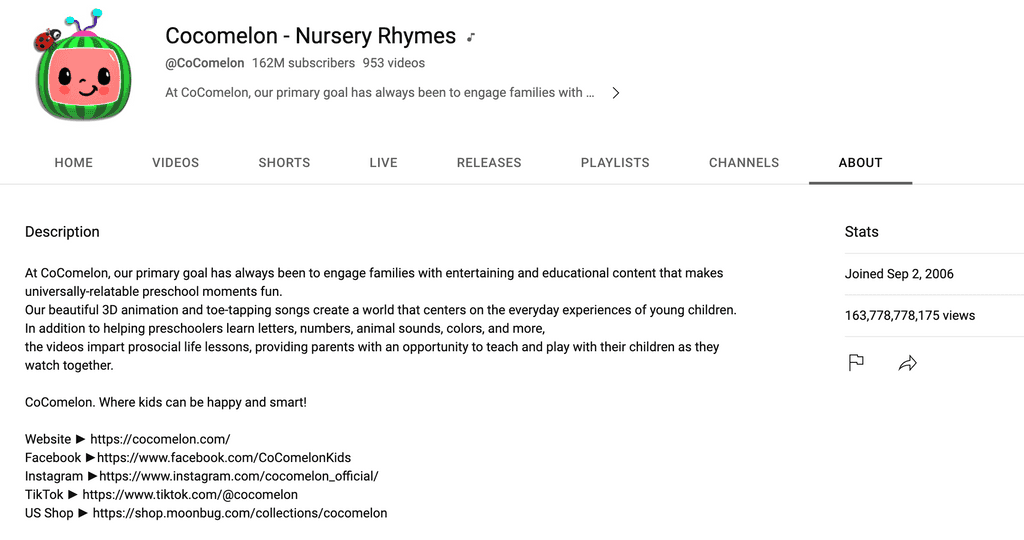
Pop Culture Evolution From Lost Generation to Generation Alpha
I've always been fascinated by the constantly evolving nature of culture, particularly pop culture. It's a captivating reflection of societal transformations, seen through the lens of music, fashion, films, and books. Today, I'd like to take you on a remarkable journey, tracing pop culture's evolution from the Lost Generation right through to Generation Alpha. We'll be stepping back in time to the jazz-soaked Roaring Twenties, navigating our way to the digital, TikTok-trending present. As we explore each generation's unique cultural imprint, you'll see how deeply the times we live in shape the art we create. So, let's start this exciting journey into the rich world of popular culture that ties the past, present, and future together.
The Lost Generation (1883-1900)
We begin our exploration of pop culture evolution by focusing on the Lost Generation — those born between 1883 and 1900. This generation's name was coined by Gertrude Stein and refers to those who came of age during World War I. As they entered adulthood, they found themselves in a world ravaged by war, forever altered by the cruel realities they witnessed. The feelings following the war affected every aspect of their cultural expression.
"All of you young people who served in the war. You are a lost generation... You have no respect for anything. You drink yourselves to death."
As we immerse ourselves in the music of this era, we're immediately met with the unmistakable strains of Jazz. This new genre of music became the voice of the Lost Generation, expressing their desire for freedom from the shackles of the past. With its upbeat tempo, improvised tunes, and syncopated rhythms, Jazz symbolized this generation's resilience and will to carve out their identity amid social turbulence. This transformative period in music was marked by the rise of iconic figures such as Louis Armstrong, Ella Fitzgerald, and Duke Ellington, whose memorable contributions revolutionized the music industry, and laid the groundwork for future genres.
As Jazz filled the air, fashion trends of the Lost Generation mirrored the spirit of liberation that defined this era. Known as the Roaring Twenties, this period brought about a seismic shift in the fashion world. Gone were the restrictive garments and conventional styles of the past. The "flapper" look emerged in their place, characterized by short haircuts, shorter skirts, and less constrictive attire. While revolutionary in its departure from traditional aesthetics, this trend symbolized much more than a fashion statement. It was the embodiment of the evolving status of women in society, a product of their newfound independence. As women became a more integral part of the workforce and celebrated hard-won suffrage rights, their fashion choices became an emblem of this journey towards autonomy and equal rights.
While music and fashion offered an escape from the harsh realities of the time, the Lost Generation sought solace and expression through film and literature. The silent film era was born, with actors like Charlie Chaplin and Buster Keaton becoming the beloved faces of this new cinematic genre. Their compelling performances, devoid of spoken dialogue, resonated with audiences, encapsulating their own silent struggles.
The written word became a powerful tool for this generation to voice their collective disillusionment. Authors like Ernest Hemingway, T.S. Eliot, and F. Scott Fitzgerald gained popularity, their works becoming the cultural touchstones of their time. Their words masterfully captured the psyche of their generation, serving as a poignant testament to the shared experiences and sentiments of the era.
"A writer should write what he has to say and not speak it."
The Lost Generation, living in a time of global unrest, channeled their everyday struggles and aspirations into art and culture. This remarkable period set the stage for the evolution of pop culture, each next generation building upon the foundations laid by their predecessors, shaping and reshaping the cultural landscape as we know it today.
The G.I. Generation (1901-1927)
Navigating further down the timeline, we find ourselves in the era of the G.I. Generation, also known as the Greatest Generation. Born between 1901 and 1927, this generation grew up amidst some of history's most significant events, like the Great Depression and World War II. These major events, marked by turmoil and suffering, forged a generation characterized by hard work, dedication, and sacrifice. These values seeped into the fabric of their lives, influencing their approach to work, family, and, indeed, their cultural tastes and trends.
The music from this period is known for its catchy Swing and Big Band rhythms. It offered a melodic reprieve from the harsh realities of the times. Benny Goodman, known as the "King of Swing," became a nationwide sensation, captivating audiences with his lively performances. His iconic 1938 concert at Carnegie Hall stands as a shining monument in the annals of jazz history, a testament to the pervasive influence and immense popularity of swing music during this time.
Much like music, fashion trends were a lively representation of the times. Inspired by the aesthetic principles of Art Deco, clothing began to feature bold geometric designs, striking colors, and innovative use of synthetic materials like rayon. Men's fashion witnessed a shift towards broader cuts. Women's attire embraced a more streamlined silhouette, with lower waistlines and shorter hemlines.
In the world of movies and literature, the G.I. Generation was spoiled for choice. Hollywood entered its Golden Age, producing timeless cinematic masterpieces like "Gone with the Wind" and "The Wizard of Oz." The literature of this age served as a platform for criticism, scrutinizing the injustices and societal failings of the times. A notable example is John Steinbeck's "The Grapes of Wrath," a compelling portrayal of the difficulties of the working class during the Great Depression. This novel, among others, unveiled the problems of ordinary people, demonstrating the power of literature as a tool for social commentary.
At the heart of the Greatest Generation's culture was a groundbreaking invention that transformed the way they consumed news and entertainment: the radio. The radio became a staple in households across the country, connecting people in a previously unimaginable way. It brought news, music, and serialized radio dramas, also known as "soap operas," right into listeners' living rooms. These dramatic tales, delivered in parts, had audiences nationwide eagerly awaiting each new episode. It created a shared cultural experience that further solidified the role of the radio in pop culture.
When I think about the culture of the G.I. Generation, it's evident that their music, fashion, and film, coupled with the rise of radio, helped to shape their unique identity. This era's cultural artifacts testify to their resilience and adaptability, hallmarks of what truly made them the "Greatest Generation."
The Silent Generation (1928-1945)
Stepping into the age of the Silent Generation, born between 1928 and 1945, we encounter a generation that emerged against the backdrop of the Great Depression and World War II. This formative period imprinted upon this generation, forming a cohort known for their tendency to conform and deep respect for authority. Yet, behind this facade of conformity existed a vivid cultural landscape.
It was in this era that Rock and Roll made its earth-shattering debut, revolutionizing the music scene and deeply resonating with the youth. With its raw energy and rebellious spirit, this musical genre invigorated the younger generation while concurrently shocking the older, more traditional folks. Elvis Presley, with his distinctive style and electrifying performances, was the undeniable poster boy of this era. His charismatic presence, both on and off stage, earned him the title "King of Rock and Roll."
The Silent Generation enjoyed thriving years of iconic figures and innovative works in the film and literature industries. Hollywood was in its heyday, introducing movie legends like Audrey Hepburn, James Dean, and Marilyn Monroe. With their exceptional talent and mesmerizing screen presence, these icons left an indelible mark on cinema. Their performances are etched in the annals of film history.
Yet, the time wasn't solely defined by the silver screen. Television made its grand entrance into the American cultural landscape. As TV sets began to populate households nationwide, shows like "I Love Lucy" and "Gunsmoke" became integral to American culture. These shows, with their engaging narratives and relatable characters, resonated with viewers, paving the way for television's future as a major force in pop culture.
Post-war fashion imaged the transition towards conventional gender norms. High-profile designers like Christian Dior endorsed it with creations that oozed femininity and luxury. The trend of a narrow waist and full skirt was captured in his "New Look" collection. This aesthetic, a stark departure from the spartan wartime fashions, displayed the optimism and prosperity of the post-war era.
Looking back at the Silent Generation, it's clear that a vibrant, dynamic, and even rebellious undercurrent lay beneath the surface, sometimes going against many social norms. Whether it was the spreading rhythms of Rock and Roll, the luxurious fashions of Dior, the iconic stars of Hollywood, or the rise of television, the Silent Generation was far from silent in their contributions to pop culture.
The Baby Boomers (1946-1964)
The cultural landscape of the Baby Boomers, those born after World War II, is a canvas of change and revolution. Their formative years occurred amid a whirlwind of societal transformation, characterized by the landmark Civil Rights Movement, the controversial Vietnam War, and the liberating sexual revolution. These monumental events catalyzed significant changes in pop culture.
The mid-20th century was a golden age of musical evolution and innovation. This period witnessed the meteoric rise of pioneering artists such as the Beatles, Bob Dylan, and the Rolling Stones. They dominated the airwaves and music charts. Their influence permeated the cultural zeitgeist, leaving an unforgettable mark on society. Their songs were anthems for change, soundtracks to the era's social and political movements. They pushed the boundaries of what music could be and what it could represent, forever transforming its face.
As the Baby Boomers ushered in a new era of societal norms, they challenged the fashion status quo. The '60s and '70s were a striking explosion of style, characterized by mini-skirts, tie-dye, bell bottoms, and bold patterns. This fashion was rebellious and unapologetic. Each piece of clothing became a statement, a protest against the restrained styles of the past, a visual representation of the radical changes rippling through society.
The film and literature industries were also experiencing significant changes. The epoch was marked by a wave of groundbreaking television shows and movies that pushed the boundaries of storytelling and representation. Audiences were charmed by series like "Star Trek" and "The Twilight Zone." These shows provided viewers with creative and imaginative storylines that explored different worlds and alternative realities.
Equally impactful were films like Alfred Hitchcock's "Psycho" and Mike Nichols' "The Graduate." These cinematic masterpieces offered fresh perspectives, exploring the human condition through unique, often controversial lenses. They prompted audiences to question, reflect, and challenge their preconceptions, echoing the spirit of an era characterized by social questioning and redefinition.
In retrospect, the Baby Boomers' epoch is a testament to the transformative power of pop culture. The music, fashion, and media of the time were not only an echo of societal changes. They were active participants and influencers driving the transformation that marked the era. This generation, born after a global conflict, witnessed and facilitated some of the deepest cultural shifts in history, leaving a lasting legacy.
Generation X (1965-1980)
Generation X, the demographic cohort following the Baby Boomers and preceding the Millennials, was born between 1965 and 1980. This generation is often overlooked, caught in the shadows of the larger and more influential Boomer and Millennial generations. Yet, their contribution to the evolution of pop culture is undeniable. The Gen Xers, often characterized as disenchanted or jaded, inherited the world reshaped by the Boomers' cultural revolution and added their unique twist to it, further transforming the cultural landscape.
Music was an essential aspect of Generation X's cultural identity. They were the spectators of an impressive musical evolution marked by the rise of punk, hip-hop, and grunge. These genres, having raw and candid lyrics, resonated deeply with this generation, capturing their spirit and struggles. Bands like Nirvana and Pearl Jam, with their grungy sound and angst-ridden lyrics, became the soundtrack of Gen X youth. Similarly, rappers like Tupac Shakur and The Notorious B.I.G. brought hip-hop into the mainstream, using the art form to give voice to the experiences and frustrations of urban life. The music of this period was characterized by its authenticity and refusal to conform, reproducing the feelings often attributed to Generation X.
"I'd rather be hated for who I am, than loved for who I am not."
Similarly, the fashion trends of this period were a manifestation of the generation's unconventional edge. The grunge look, defined by its laid-back, distressed aesthetic, became emblematic of Generation X. Flannel shirts, ripped jeans, and band t-shirts were a trend that followed a certain rebellious and carefree attitude of Gen Xers. The fashion of this age abstained from glamour for authenticity, creating a sharp contrast with the exuberant styles of previous decades.
But it wasn't only music and fashion that marked the cultural contributions of Generation X. They also experienced a tremendous metamorphosis in the film industry, witnessing the beginning of the era of blockbuster films. The cinematic landscape was forever altered by directors like George Lucas and Steven Spielberg, whose films "Star Wars" and "Jaws" smashed box office records and redefined what a successful movie could look like.
Generation X was a period of radical evolutions when cultural norms were questioned, and conventions defied. It was an era of disenchantment but also of authenticity and bold expression.
Millennials (1981-1995)
When we shift our gaze to the Millennials, those born between 1981 and 1995, we see a generation that found itself straddling a fascinating juncture in time. Their formative years coincided with the beginning of the new millennium, bringing exceptional technological advancements and, tragically, the unforgettable mark of the 9/11 attacks. The combination of these contrasting experiences shaped the Millennials in remarkable ways, creating a cultural environment that was at once vibrant, diverse, and occasionally full of tension.
If you tuned into the radio stations or MTV during this time, the sounds of pop music were impossible to ignore. The airwaves were dominated by the voices of boy bands like NSYNC, whose fan base was comparable to that of the Beatles. Pop princesses such as Britney Spears emerged as the new idols for young girls. Their every move and every outfit were closely watched and emulated. At the same time, Hip-hop and R&B found their stride. Artists like Jay-Z and Destiny's Child were not only cementing their legacy in music but also influencing broader conversations around race and identity.
The fashion of the Millennials was as diverse as the generation itself. Fashion trends were not merely cyclical but became a melting pot of influences from various eras. However, what set this era apart was the birth of the hipster trend. This generation found charm in the old, inspired by their grandparents' closets to create a vintage-inspired fashion wave that swept across the globe.
When it came to literature and films, the Millennials had their own set of cultural landmarks. The release of J.K. Rowling's "Harry Potter" series was a watershed moment, reigniting a global passion for reading among both children and adults. This magical series transcended age and geography, becoming a shared cultural experience for millions worldwide. In parallel, the world of television was changing. Reality shows took the world by storm, capturing viewers' imagination with a different type of storytelling. Shows like "Survivor" and "American Idol" gained massive audiences and blurred the lines between ordinary people and celebrities.
However, the most defining trait of the Millennial era was the rise of the Internet and the inception of social media. These were cultural game-changers. Facebook, Twitter, and Instagram revolutionized how people communicate. They completely reshaped how we express ourselves, create and consume art, and perceive ourselves. The introduction of viral content added a new layer to the cultural landscape. An idea, a dance, a phrase could now cross continents at lightning speed, creating a global culture that was more interconnected than ever before.
The Millennial generation was fearless in redefining the norms and influencing culture according to its standards. As we continue to explore pop culture's rich tapestry, the influence of this unique epoch remains ever-present, reminding us of a time when the world, quite literally, changed at the click of a button.
Generation Z (1996-2009)
Generation Z, born between 1996 and 2009, is unlike any other in history. Being the first generation to grow up in a world entirely encapsulated by the Internet, these individuals are true digital natives. This online environment has bred a more diverse, interconnected, and globally-minded generation than any of its predecessors. They're growing up in an increasingly complex and dynamic world where digital and physical boundaries have blurred, creating a unique culture deeply intertwined with technology and the online world.
The musical scene of Generation Z is as multifaceted as the generation itself. Zoomers have a broad taste in music, going beyond traditional genres, showing their openness to hybrid styles and change. They favor artists who push the boundaries and blend genres in new and exciting ways. The shift to digital has also fundamentally altered the way music is consumed, with streaming services like Spotify becoming the standard. Such platforms provide access to an extensive music library and offer personalized recommendations, helping broaden musical horizons and expose listeners to new artists and genres. The era of physical music media like CDs or vinyl records is fading, replaced by playlists and endless streams of tracks.
Generation Z's approach to fashion reflects their digital savviness and global consciousness. Social media platforms like Instagram and TikTok play a significant role in setting trends and influencing styles, creating a rapid-fire fashion cycle where trends can emerge overnight and spread globally within hours. At the same time, this generation is becoming increasingly aware of environmental issues and the importance of sustainability. As a result, thrifting and DIY fashion, which promote reuse and personalization, are experiencing a resurgence.
The rise of video-streaming platforms like Netflix and Hulu has revolutionized how video content is consumed. The once-dominant movie theaters and physical bookstores are giving way to digital platforms that offer diverse and accessible content at the click of a button. These platforms are not only redefining how content is distributed but also shaping it, with a growing focus on diversity and representation. This means a wider variety of voices and perspectives are being heard, showing the diverse reality of Generation Z's world.
Above all, the distinctive feature of Generation Z is their relationship with the digital world. The Internet is an integral part of their daily lives and identities. Social media influencers, YouTube stars, and TikTok trends are cultural phenomena that shape their worldviews, tastes, and behaviors. The digital world provides a platform for self-expression, creativity, and connection, affecting Generation Z's culture in ways we're just beginning to understand.
Generation Z is charting its own course in the world of culture. They're a generation born and raised in the digital age, navigating a world where boundaries — be they cultural, geographical, or societal — are increasingly fluid. Their influence is already reshaping pop culture as we know it, and it's clear they're just getting started.
Generation Alpha (2010-Present)
The newest generation to emerge on the stage of history, Generation Alpha, with birth years starting from 2010 and extending into the present, is unquestionably the most technologically fluent generation. This cohort is born into an age where tablets are toys, smartphones are the norm, and AI assistants like Siri and Alexa are part of daily household interactions. All this is developing a relationship with technology distinctively different from previous generations. The term "digital native" has an entirely new meaning for Generation Alpha. Technology, for them, is not an added element of life but an integral part of their existence.
Though their influence on pop culture may seem preliminary, given their young age, Generation Alpha is already leaving noticeable footprints in the digital sand. Interestingly, their cultural influence is not merely a result of their own interactions with technology but is also significantly channeled through their technologically adept parents. The choices and preferences of this generation are gradually beginning to shape the offerings of tech and media companies, who keenly observe the digital behavior of these young users to understand and anticipate emerging trends.
Generation Alpha's favorite pastimes reveal a lot about their lifestyle and preferences. These children are growing up watching YouTube videos for entertainment and learning, which have become the go-to solution for engaging children and satisfying their natural curiosity. The rise of child-friendly channels and videos on the platform is evidence of this trend.
Similarly, online gaming is no longer solely a recreational activity. Educational games have become an effective tool for learning and skill development. The apps on tablets and smartphones offer vast interactive learning possibilities, making the education process more dynamic and enjoyable.
As Generation Alpha grows and matures, its cultural influence will become more substantial. They will not just be passive consumers but also active creators and shapers of content. As the first generation entirely born within the 21st century, they will steer technology and culture in ways we can only imagine. It is fascinating to observe how they will continue to mold and redefine pop culture, technology, and social norms in the future.
Every generation brings its unique style and taste to the cultural table, creating a rich tapestry of trends, expressions, and movements. As we move into the future, pop culture will continue to evolve, shaped by the experiences and values of the coming generations. No matter what comes next, it promises to be an exciting journey of continuous cultural reinvention.
